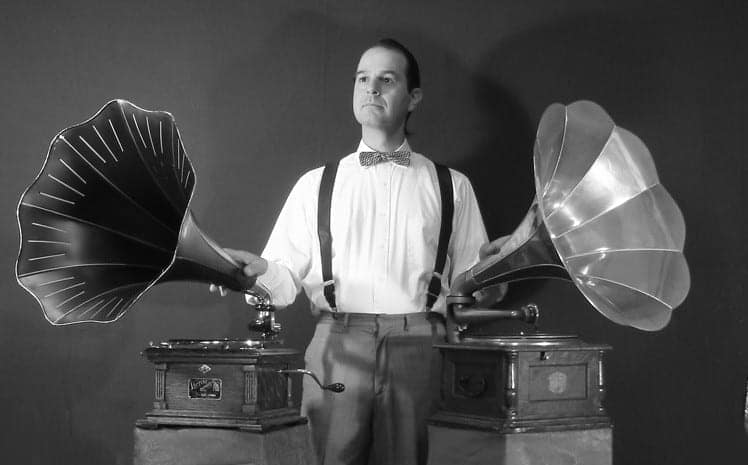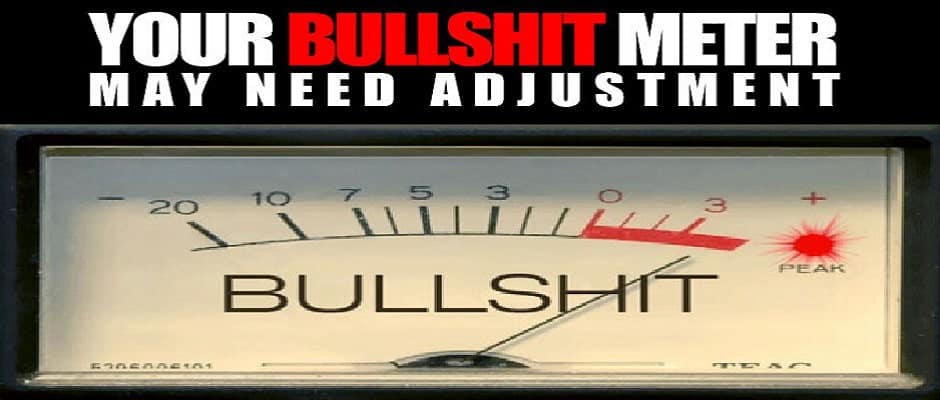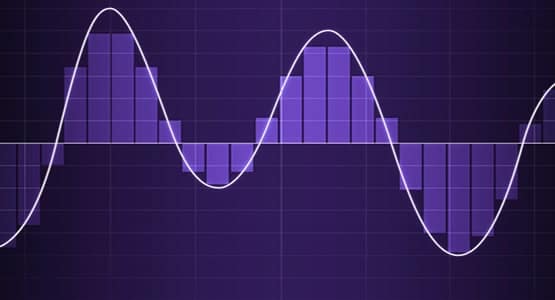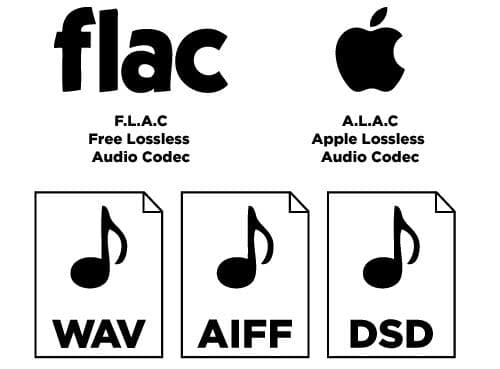Less is truly more. Fidelity drops through the floor as we process in series. So use as few plugins as possible to get the sound on each channel, and final mixes should only be reconverted if we need higher def masters than mixes. Whoever says so, and however eye-watering their fee. Some mastering engineers talk about ‘upsampling to analogue’, and ‘little from lots’ of analogue gain stages, or maybe an upsampled 96kHz master to avoid DSP aliasing. Here you’ll find a totally different risk analysis for optimizing sound. These mastering and mix tips are from a purist digital approach to getting the best from the wonders of analogue processing.
Think Inside The Box
Every layer of ‘upsampling to analog’ conversion is another two times the most critical stages of generating and capturing pristine audio. Even the finest converters are mathematically approximating the analogue signal every (e.g.) 44100th/sec to the nearest number the computer system has available. The more times it’s resampled, the further the digital signal differs from the theoretically perfect. These errors are then skewed by one of the most serious logical and practical limitations of digital signal processing ( DSP) – the compound rounding errors that we can hear as ‘veiling’.
Here’s a very simplified snapshot of why it’s such a problem. All digital systems have to ‘quantise’ analog waves to the nearest available decimal place. Those places are limited by the bit depth, so the last digit is always rounded according to the digits that get chopped off.
To exaggerate, if only one decimal place were available,
1 ÷ 3 = 0.3 -> 0.3 x 3 = 0.9
A 10% resultant rounding error in 2 calculations. In 32 bit, each error is infinitesimal, but they can easily compound over the zillions of DSP calculations going on in each CPU core.
Don’t imagine that 64 bit has such digital accuracy and sooo many decimal points that it’s no longer an issue. That’s effectively true if you use high quality DSP and DAWs and know what you’re doing – but step back to analog or process unnecessarily and you’ll hear it.

Trust Your Ears
So the best mix tips advice for rendering/bouncing is to always digitally render all open tracks at once, rather than render processes in series. Offline is OK if you’re sensible enough to have a high-end DAW that will do it. It’s the same at the mastering stage. If you’d like to hear how easily compound rounding errors can mush your mixes, just try your high-end DAW’s ‘freeze-tracks’ on a lead vocal, which 32 bit renders that track to liberate CPU on the plugins. Bounce a final mix with and without the track frozen. Then a/b them and listen on some quality headphones for the subtle veiling on the lead vocal. Sounds like you want to nudge its 10k EQ. But that won’t help. It’s a permanent harmonic issue. Null them if you’re in any doubt about the difference. It’s because we’re setting the lead vocal in binary stone by freeze rendering it to 32 bit float .. then re-rendering it again ‘petrified’ like this with the rest of the mix. It’s just less mathematically accurate than rendering all the mix channels live. So master and mix with the least rendering stages possible.
Do Your Own Sums
You might think then that digital summing and rounding are good arguments for ‘upsampling to analogue’ and mastering in analogue, or even analogue bussing and mix summing. I’ll state quite clearly here that my experience says there’s no inherent theoretical or practical problem with digital summing in the right DAW and keeping everything live – as long as your method isn’t problematic. Hugh Robjohns argued it honestly way back in 2004 in SOS, it’s far from a new idea. Just heretical amongst the combined religious might of some of the flat-earther high priesthood of the Ordo Analogis. It’s not helpful that ProTools has often been used in the literature for comparative testing with analogue summing. Its audio engine and workflow have historically been elevated above their station. I was at a high level AVID training conference in Pinewood in 2009 when it was clearly stated that they had the largest team they’d ever assembled back in San Fran working on urgently establishing ‘audio engine equivalence with the competition’. Forget the intricacies of fixed 48bit ProToolean mathematical philosophy – they were still simply trying to get busses delay compensated to come back to the mix buss in time! I’ve had plenty of idiosyncratic issues with other DAWs too, but there were several back then that had cracked this unforgiveable issue years before. It’s a stark example that there are many more factors affecting digital DAW rendering than ‘summing linearity’. Having your buss effects and sub groups anything other than phase locked will sure as hell give you imaging and tonality issues. With current 64 bit summing and rigorous audio engines it’s high time to get real. You will gain analogue entropy and non linearity by going out analogue, and you will also lose clarity, phase integrity and gain undesirable harmonic and enharmonic distortion, as well as suffer the vagaries of even prestigious AD/DAs on every single track.
BTW in the interests of balance, Apple, ain’t it about time to sort out core audio hanging onto CPU core threading when the DAW is parked? It’s a total butt pain resetting core audio ever time to clear the CPU load for Logic and Cubase ( any maybe others) … and maybe that bug that’s been in Logic forever, where you move a part too quickly/ too far to the right – and the screen screen space shifts to the next one.
I have dozens & dozens of DATs full of totally analogue mixes and not a single one sounds better because it was analogue summed. Brilliant they might occasionally be – cos the mix is great. Duller, softer and less subby they might be, and that might sound good to some ears and in some genres. But digital can do that now on just some mix tracks if you want – and leave the high harmonics of the cymbals intact if you choose. But there are really big-picture factors that affect mix brilliance, and they’re rarely discussed. Like trying to finish mixes while fighting with your huge analogue console’s automation after your 2nd night without sleep, with the studio’s next client banging on the control room door cos it’s gone 10am. You’re still desperately running off various stems in case you got fundamentals like the vocal level wrong. Boy does it improve mixes when you can shut down the computer and get an instant truly total recall when you’re human enough to remember your name, spot the ridiculously obvious bat-killing high hat… and actually feel creative. It’s no accident that mixing has improved massively with the advent of in the box. Some late 60s, early 70s mixes were already superb, but go listen to some of the rubbish British mix tripe from the 80s & 90s. There’s an exemplar 90s UK track in my reference toolbag for those times when everything just sounds crap – a massive hit by a mega star male singer, with no budget spared.. Nothing wrong with the song, it sold like crazy – and I like it too – but it’s really difficult to tell whether the bottom end dynamic was butchered at mix, or just mastered within an inch of its life. It blows away rainy day ear blues a treat – suddenly everything sounds fine in comparison. It’s also no accident the majority of my classic reference tracks are US mixed and mastered. The emperor’s bollock nakedness may well be an intractable sector-wide issue but some of his new clothes have been a particularly long time vanishing in parts of music biz UK.
But anyway, here’s the analogue rub:

Much Analogue Distortion Is Not Good Distortion
Every analogue processing stage adds distortion. Some of that quantum entanglement is freakily flattering, but maybe not so much the ‘wiring’ noise and earthing back-scatter from the hefty kit plugged in the whole hood’s local grid. Like the vinyl crud that rose-tinted ears forget till they gurn at the worn-out groove fuzz, or makes you scrabble for the carbon anti-static brush. The fact is the halcyon days of analogue were plagued by lofi even when you wanted hifi! And shocking as it may be to those who need corporate capital to buy their gear, the very best digital analogue emulations are now indistinguishable from the real deal (see below). If we want higher def masters, then go ahead and upsample before this digital mastering chain so any high partial harmonics generated (above the mix’s aliasing frequency) by those superb emulations can be captured.
Aliasing demystified: From 20-22kHz, standard 44.1kHz audio is always steeply high-cut, to stop frequencies above 22k aliasing with the sampling frequency to make nasty new frequencies. Like the difference in two adjacent strings we hear as ‘beating’ that disappears at dead unison.
So if you want the amazing warmth and desirable harmonic distortion of classic analogue processors .. without the crud – don’t go back to analogue! There’s more than a little irony in digital being able to do analogue better than analogue can. Flat-earthers hate it.
No harm remembering here that with analogue we could never make the sort of precision, linear-phase processing now taken for granted. This sort of EQ and compression, which can affect the loudness of frequencies but not their phase, is crucial to modern high quality digital audio. Mastering can be all about what we do with the phase relationship and harmonics. Sometimes there’s plenty analogue in the mix – it just needs a phase-transparent lift.

Buy A Good BS Meter – On Sale Here Only £1999 – Limited Offer!!
In this DSP democratised post-digital, post-post-modern, post-fake-truth 21st century, the archaic secret society ritual of faerie-breath mastering on hottest engineers’ mixes is mostly just fable. Ninja mix skills are only learned at the increasingly sharp edge. Masterfully savvy mix tips flower unexpectedly in the YouTube desert, they get buried in regurgitated platitudinal mix trivia in mags and books; and totally drowned out by the BS social media echo-chamber of ‘mix tips’ from novices more intent on marketing elementary audio errors than honing their skills. Classic urban-myth mix tips about the all important bustin byass are some of the funniest. Like notching out frequencies and sidechain compression to achieve low-end clarity and punch. They rarely work and here’s why:
Totally Partial
Harmonic envelopes and musical dynamics are time-domain, EQ is steady-state. Think unplugged – no one asks an unamplified double-bass player to notch their acoustic EQ somehow so the jazz drummer’s kick can be heard. We just hear them both. The wickedly complex time-domain ADRSs – per partial harmonic/enharmonic frequency in each sound (!!) – give wholly different transient responses. This means we can distinguish clearly each bass note from each kick – even when they coincide! This is probably the most important audio lesson I ever learnt, despite never reading it anywhere in the never-ending research journey. So here it is again – gratis :-
It’s these bogglingly complex time-domain partial ADSRs, at the heart of the nature of sound, that let you identify people you barely know by just their voices – with pretty much total confidence .. even when talking over each other. So be real careful how you f*** with your fundamental partials!
Skillfully applied choice broadband EQ, and simple (maybe parallel) compression are all we need most of the time. By all means use a gate or expander to try to ‘fix’ that sloppy bass in the mix and ‘lock’ it a bit more with the kick – but think carefully before you side chain the kick to compress bass notes, or notch out important instrument-identifying, and note dependent harmonics for the sake of ‘clarity’. Better just replay the damn bass part well – or at least quantise it – and step away from the sidechain. Unless you’re making french disco à la Daft Punk or Stormzy grime … maybe.
The Brian Clough School of Excellence
It can take a long time to truly understand that decent samples or mics, spine-tingling takes and not messing with it too much afterwards is where most of the magic happens. Classic tracks come from hard-earned production skillsets with soft-skills as well as software skills; but it’s far easier to believe we just need more mix and master ‘tings’. Shhh… If you’re not a well-seasoned pro … here’s the best mix tips advice … the classiest mastering results come from artists and mixers who rein-in the fancy shiz.
As Cloughie said to Alan Hill , the bemused new keepers’ coach for soon-to-be double European Champions Nottingham Forest:
Coaching’s ruined this game son: Centre halves head & kick the ball – preferably away from my goal; midfielders pass the ball well, or give it to someone who can … and you goalkeeping lot stop that ball going between my sticks. Got it, young man?
The best in the business get the basics right. They don’t over-compress or over-EQ. They don’t use anything they can’t hear or don’t understand. They don’t take those urban-myth mix tips advice from those who’ve no track record of great mixes. The magic will happen if you have the discipline to facilitate it and the nouse to recognise it! Class mastering should just reveal it fully.
Wot Loudness War?
Your mixes might well need much more than leprechaun dust. Substantial bottom octave enhancement, de-essing whilst lifting the 8kHz air, old-skool mid range mix compression that doesn’t pump with the bass, high quality tube emulation – or the opposite when the bottom octave is already losing out to the first harmonic. The permutations and nuance are vast. Most mastering text books wince at the addition of 6, 9,..12 dB of top-dollar EQ. And apparently the global loudness war is sending our kids deaf and killing sales. Get a grip. Daft Punk’s much praised RAM LP sets a welcome trend down to about -10dB RMS but if your genre needs it, we’ll ram it! With all that in mind, Mastered for iTunes with Sound-check style -16LUFS automatic level control is laudable… and laughable.
Nearly dropped mi french-fries reading parts of Bob’s 2013 MFiT bed-time classic. Homogenisation is anathema for some artists. A push for better masters is great, but c’mon Apple, where’s the decent lossless format at the right price? The justifiably revered and combined might of Owsinksi & Katz co-opted?… surely not. But seriously smart business for Apple to store your hi-def 24bits on their fluffy iCloud … in perpetuity 😉
Vinyl, wav, aac, mp3, ogg, WTF?
Don’t forget the rise and rise of beautiful boutique wax that needs vinyl-legit digital pre-masters. Vinyl sales are nudging back to 80’s levels after topping out sales in the UK set in 1996! Turnaround times are daft. It took 9 weeks to get recent US buzz chart topping co-production The Windmills Project Death Disco ep back from the only UK plant. It was cut by Kevin Metcalfe one of the true dons of voodoo vinyl magik. He still consistently translates top dig masters to wicked, deep vinyl cuts – the cap is firmly doffed Kevin. You need MFiT/aac/mp3 friendly masters too. If you master for yourself, set levels that won’t intersample clip aac (and mp3). Easier said than done. As long as kids blaze beats on tinny smartphones, MFiT’s RoundtripAAC and Ozone’s codec emulator will be damn useful plugins. Try Roundtrip’s a/b (wav/aac) comparison with your eyes closed after clicking a few times so you’re unsure. It’s a very good listening acuity exercise and equipment test. Like it or not, aac encoding (as all lossy codecs like mp3) changes the sound of the pure WAV master. It seems to narrow stereo perspective slightly for one thing – sensible to write algorithms to prioritise the mid over side component a little when ditching data perhaps. They’re called ‘lossy’ for a reason.
So the seasoned mix engineer’s mix tips advice here is to use top class oversampling intersample peak metering and master buss limiting when you’re mixing and self-mastering for release. Leave about 1dBFS headroom for lossy format conversions, and don’t forget to reference constantly to the very best material and match its RMS level. Or just get the vibe by sticking to basics and give it to an experienced mastering engineer that’s prepared to advise you on how to get the mix tip-top.
OK Empirical Storm Truther – Where’s The Evidence?

Research supervised for DeMontfort University final year undergrads in 2013 and 2014 seems to confirm that, within non-linear bounds (i.e when we don’t hammer the level), the best digital emulations are indistinguishable from the original equipment. In fact the digital emulations appear cleaner than the real kit in studio situ. The lack of hard comparative analysis in the literature is deafening, but this sonic clarity may well be because those emulations are convolved or ‘sampled’ on ultrashort signal-chain test beds. Information from a refreshingly candid RnD’er at Focusrite anecdotally confirmed this possibility. Remember even the very best analogue studios or mastering suites have relatively long cable runs and may have non-trivial earthing, impedance and converter issues. Protecting mixes in the digital domain avoids all this. It may also explain why some complain of the ‘clinical’ nature of these DSP emulations. Having said that, since moving ‘into-the-box’ around 1997, it was obvious immediately that it was 100% necessary to replace analogue ‘chaos’ with canny workflows. Working with 2″ tape at +12dB was great, but true liberation is the ability to get the sound of 2″ and 1/2″ and tubes and Rupert Neve alchemy and crystal clear linear phase 9624 transients … all juxtaposed in the same mix.
Real creative audio democratisation arrived with not having to spend hours tweaking, kicking and pre EQ-loading 2″ tape machines worth a suburban semi to get any vague approximation of frequency and phase fidelity
Guess what? The sometimes lovely and unmistakable effects of tape have now been modelled with loving übernerdmeister precision – and we don’t need mortgages or azimuth-alignment training to take advantage of mix tips like this one: tape can get you some great sounds! Try J37 and Slate – you can change the tape formulation and bias anytime you like, and have unlimited tape tracks in your backpack! Beats manhandling a 20ft trailer back into its Manchester lockup next to 808 State’s studio to get your 24 track recording setup mobile. Don’t miss those bits of those days in the slightest.
Fields of Musical Morphology Mix Tips
A new breed of mastering-people are emerging with mix skills and vice versa. Both need a good ear and immersive training to learn from the morass of mix tips and ‘advice’ out there. Remember, ‘clean’ and ‘flat’ are rarely what we’re after. We love distortion. It doesn’t necessarily have to be the ‘right type’ either. Beautiful even-order tube saffron is no match sometimes for down and dirty, habenero-hot non-harmonic naaaastiness.
An exponential torrent of good, bad and ugly DSP is now just a swipe away. What can’t be pirated or blagged is 25 years of mixing, production and mastering experience., major and indie record contracts as an artist, a mathematical physics degree, PhD computer science research; or the looooooooong hours of practice-based research and academic discipline as associate Music & Technology lecturer. I’m happy to help you on to the next step of your knowledge journey if I can, but it will never be possible to just Google Cast wisdom from the internet of things. We don’t even understand the basics of consiousness or intelligence yet.
So go for it! Jump in to your passions feet first and figure it out as you go. There’s nothing to lose – except the potential of life-changing musical influence on people you never meet if you hang scared. I made plenty mistakes and ignored plenty advice on the way here, only to come back full circle on their importance.
I too got a lifetime full of received-wisdom fake news and unsubstantiated ‘facts’ that take years to sift through recursively. And don’t trust this info here – or any info – until you’ve made some assessment about its likely veracity. Remember confirmation bias will jack you on every corner in Hubris Hood.
Above all if you really want to produce, mix and master like the best, remember music is much, much more than the construction of its parts. It unifies and polarizes; it can be visceral, intoxicating and ephemeral. Vetter et al’s 2014 research paper establishing the visual cortex as a major player in our audio perception is no shock to those of us who close our eyes to ‘synesthesia-ise’ kinetic low-end through gut or sole. Music is a whole body, whole mind experience where reductionism will always be rendered impotent – unnecessary and always insufficient.






